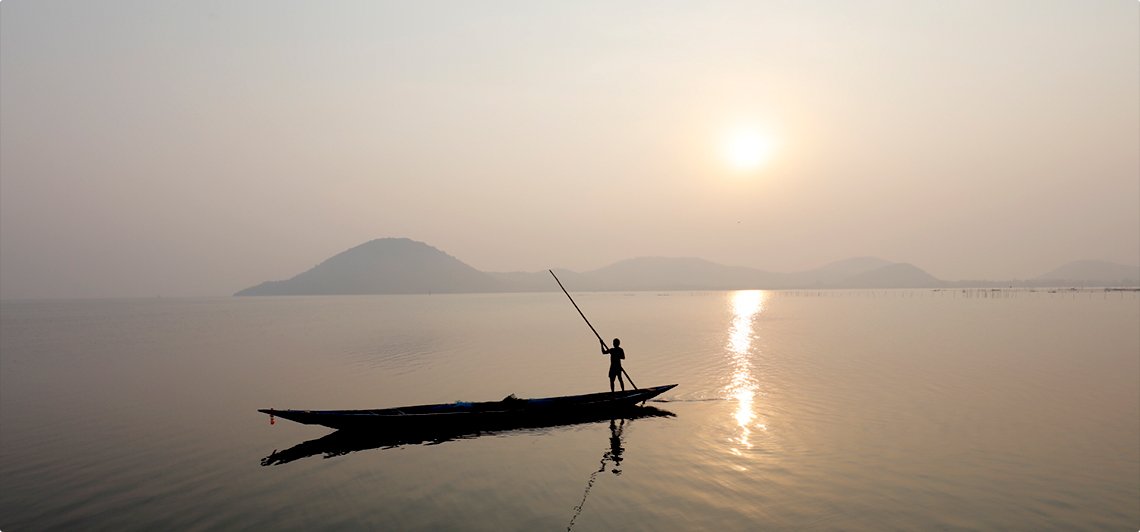“He who cannot enter the temple, can still pull the Lord’s chariot.”
In the spiritual heartland of Odisha, once a year, the mighty Lord Jagannath steps out of His sanctum, riding a grand chariot through the streets of Puri. This is the Ratha Jatra, the world’s largest chariot procession, where divinity meets devotion, and faith flows like a sea of humanity.
Whether you’re a believer, a traveler, a photographer, or a seeker — Ratha Jatra in Puri is an experience of a lifetime.
The Puri Rath Yatra (ପୁରୀ ରଥଯାତ୍ରା)
Chariots & Deities
- Nandighosha (ନନ୍ଦିଘୋଷ) – Lord Jagannath
- Taladhwaja (ତାଳଧ୍ୱଜ) – Lord Balabhadra
- Darpadalana (ଦର୍ପଦଳନ) – Devi Subhadra
Steps of the Yatra
Step 1: Nabakalebara (happens in 12 years or 19 years)
New Idols are made from neem wood months before the Yatra.
Skilled artisans secretly carve new idols of Jagannath, Balabhadra, and Subhadra from sacred neem trees known as “Daru.” This occurs when there’s a leap month (Adhika Masa) in the Hindu calendar, typically every 12–19 years.
Step 2: Snana Yatra
Deities are bathed with 108 pitchers of aromatic water.
Held on the full moon day of Jyestha month, this grand bathing ceremony is conducted on a raised platform called “Snana Mandap.” The deities are decorated and sprinkled with herbal water.
Step 3: Anavasara
Deities fall sick due to the bath and retreat to a secret altar for 15 days.
After the Snana Purnima, the deities are believed to fall ill and are kept away from public view in a special chamber called “Anavasara Ghar.” They are given herbal medicine and cared for like humans.
Step 4: Navajouban Darshan
Public appearance of deities after the isolation.
After 15 days, the deities recover and are given a fresh youthful appearance, called “Navajouban.” This is the first public darshan before they embark on the Rath Yatra.
Step 5: Chhera Panhara
The King of Puri ceremonially sweeps the chariot platforms.
The Gajapati Maharaj, considered the chief servitor of the Lord, sweeps the platforms of the chariots with a golden broom, signifying humility and service.
Step 6: Gaja Besha
Deities adorn the Ganesha attire to begin the Yatra.
On the Rath Yatra day, the deities are dressed in “Gaja Besha” (elephant attire), symbolizing Ganesha, the remover of obstacles.
Step 7: Sri Gundicha Yatra
Deities leave for the Gundicha Temple to meet their aunt.
The chariots are pulled through the Grand Road (Bada Danda) to Gundicha Temple, considered the Lord’s maternal home, around 3 km away.
Step 8: Bahuda Yatra
Return of the deities after staying at Gundicha temple for 9 days.
The return journey, known as Bahuda Yatra, is celebrated with equal grandeur. On the way back, they halt at Mausi Maa Temple, where Lord Jagannath is offered Poda Pitha (a traditional baked sweet).
🛕 History and Origins: Why Ratha Jatra Happens
The roots of Ratha Jatra trace back to ancient scriptures like the Brahma Purana, Padma Purana, and Skanda Purana. It is said that once a year, Lord Jagannath, along with Lord Balabhadra and Goddess Subhadra, longs to visit His aunt’s temple — Gundicha Mandir, located 3 km away.
To fulfill this desire:
- The three deities ride in individual massive wooden chariots, pulled by lakhs of devotees.
- They stay at Gundicha Temple for 7 days, symbolizing rest, celebration, and outreach to all devotees — even those outside caste, creed, or faith.
The tradition dates back over 1,000 years, institutionalized during the reign of King Ananta Varman Chodaganga Deva of the Eastern Ganga dynasty.
📅 When Is It Held? (2025 Date)
In 2025, Ratha Jatra falls on Friday, June 27, the second day of the bright fortnight (Shukla Paksha) of the Ashadha month in the Hindu calendar.
Key Ritual Dates (2025):
- Debasnana Purnima (Holy Bathing Day)
- Anasara Begins – June
- Ratha Jatra (Main Procession) – June 27
- Hera Panchami (Lakshmi’s symbolic protest) – July
- Bahuda Jatra (Return Journey) – July
- Suna Besha (Golden Attire Darshan) – July
- Niladri Bije (Return to Sanctum) – July
🏰 The Three Chariots
| Deity | Chariot Name | Height | Number of Wheels | Color Theme |
|---|---|---|---|---|
| Lord Jagannath | Nandighosha | 44 ft | 16 | Red & Yellow |
| Lord Balabhadra | Taladhwaja | 43 ft | 14 | Red & Green |
| Goddess Subhadra | Darpadalana | 42 ft | 12 | Red & Black |
- Constructed freshly every year using Neem wood by traditional Maharana and Bhoi servitors.
- Chariots begin their journey from Singhadwara (Lion Gate) of the temple.
✨ Ritual Highlights
- Pahandi Bije: Grand ceremonial procession bringing deities onto chariots.
- Chhera Pahanra: Gajapati King of Puri sweeps the chariot floor in humility, symbolizing that no one is above service.
- Pulling of Chariots: Devotees tug thick ropes to pull the Lord’s chariot — considered a once-in-a-lifetime blessing.
🚆 How to Reach Puri for Ratha Jatra
✈️ By Flight:
- Nearest Airport: Bhubaneswar (BBI), 60 km from Puri.
- Pre-paid taxis and ride apps (Ola, Uber) are available to Puri.
🚆 By Train:
- Puri Railway Station connects to major cities like Kolkata, Delhi, Chennai, and Bhubaneswar.
- Special trains are introduced during Ratha Jatra — book well in advance.
🚌 By Bus:
- Odisha State Road Transport (OSRTC) and private buses from Bhubaneswar, Cuttack, and nearby districts.
- Special government buses operate continuously during the 3–5 key days of the festival.
🛏️ Stay Arrangements During Ratha Jatra
Due to the massive tourist inflow, book your accommodation at least 2–3 months in advance. Choose from:
1. Premium & 5-Star
- Mayfair Heritage
- Sterling Puri
- Toshali Sands
- Pramod Convention & Beach Resort
2. Budget & Mid-Range
- Hotel Holiday Resort
- Hotel Gandhara
- NRS Royal Palace
3. Government Accommodation
- Panthanivas (OTDC)
- Railway Retiring Rooms
- Dharma Shalas near Gundicha Temple
✅ Tip: Book through OTDC, IRCTC, or verified travel platforms. Use ExperiencePuri.com’s “Stay” section for curated listings.
🧳 Essential Do’s & Don’ts for Ratha Jatra Visitors
✅ Do’s
- Carry water, hat/cap, light snacks
- Wear light, modest clothing and comfortable footwear
- Reach early morning to secure viewing spots
- Follow local police and crowd management guidelines
- Keep cash/change handy; UPI may be slow due to network congestion
- Book your return tickets and rooms well in advance
❌ Don’ts
- Avoid climbing any structures or rooftops to view the yatra — dangerous and illegal
- Don’t touch the ropes or chariots forcefully — wait for organized participation
- Avoid littering the city; respect the temple customs
- Avoid pushing or aggressive photography near the chariots
📍 Where to Stand for the Best View?
- Along Grand Road (Bada Danda) between the Jagannath Temple and Gundicha Temple
- Municipal viewing platforms (tickets may be needed)
- Roof-top access from booked guesthouses (verify in advance)
🍛 Food & Mahaprasada on the Day
- Visit Ananda Bazaar inside the temple or local counters for Mahaprasada (dry and wet options)
- Local sweets like Khai, Rasabali, and Khaja are available near Grand Road
- Avoid heavy meals before entering large crowds
🛣️ Return Journey Tips (Bahuda Jatra)
- The return procession (Bahuda) is less crowded than the main yatra
- Suna Besha, when the deities appear in golden attire on the chariot, is a rare and dazzling sight
- The festival ends with Niladri Bije, the return of the Lord to His temple after reconciling with Maa Lakshmi
📸 Why Ratha Jatra is Unmissable
- World’s oldest and grandest procession of gods
- One of the few festivals where non-Hindus can have darshan
- Blend of spirituality, culture, devotion, and spectacle
- Emotional, visual, and spiritual overload — truly “God in motion”
🕉️ At Ratha Jatra, you don’t go to the temple. The temple comes to you.
For verified updates, itinerary plans, travel assistance, hotel booking, and spiritual background, visit ExperiencePuri.com — your one-stop resource for the Divine Circuit of Sankha Kshetra.






Leave a Reply